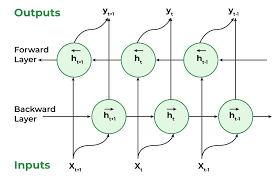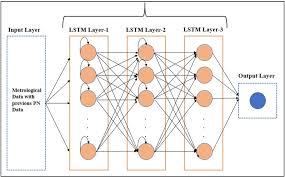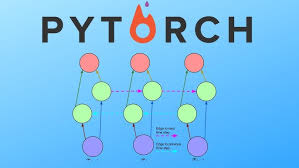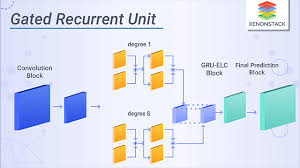Understanding Bidirectional Recurrent Neural Networks
In the realm of artificial intelligence and deep learning, recurrent neural networks (RNNs) have established themselves as powerful tools for sequence prediction tasks. However, traditional RNNs have their limitations, primarily due to their unidirectional nature. This is where Bidirectional Recurrent Neural Networks (BRNNs) come into play, offering a significant enhancement in performance for various applications.
What are Recurrent Neural Networks?
Recurrent Neural Networks are a type of neural network designed to recognize patterns in sequences of data such as time series or natural language. Unlike feedforward neural networks, RNNs have connections that form directed cycles, allowing them to maintain a hidden state that captures information from previous steps in the sequence. This makes them particularly well-suited for tasks where context and order matter.
The Limitation of Traditional RNNs
Traditional RNNs process sequences in a single direction—typically from past to future. While this approach works well for many applications, it has a significant drawback: it cannot utilize future context when making predictions at any given point in the sequence. For example, understanding the meaning of a word in a sentence often requires looking at both the words that came before and those that follow.
Introducing Bidirectional RNNs
Bidirectional Recurrent Neural Networks address this limitation by processing data in both forward and backward directions. A BRNN consists of two separate RNN layers: one processes the input sequence from start to end (forward), while the other processes it from end to start (backward). The outputs from both layers are then combined, typically by concatenation or summation.
Architecture of BRNNs
- Forward Layer: This layer processes the input sequence as a standard RNN would, moving from the beginning to the end of the sequence.
- Backward Layer: This layer processes the input sequence in reverse order, moving from the end to the beginning.
- Combining Outputs: The outputs from both layers are combined at each time step to form a comprehensive representation that considers both past and future context.
Applications of Bidirectional RNNs
The ability to consider context from both directions makes BRNNs particularly powerful for several applications:
- Natural Language Processing (NLP): Tasks such as part-of-speech tagging, named entity recognition, and machine translation benefit significantly from bidirectional context.
- Speech Recognition: Understanding spoken language often requires considering phonetic information before and after each sound.
- Time Series Analysis:
The Future of BRNNs
The development of Bidirectional Recurrent Neural Networks represents an important step forward in machine learning. As researchers continue to refine these models and integrate them with other advanced techniques such as attention mechanisms and transformers, we can expect even more impressive performance improvements across various domains.
If you’re working on projects involving sequential data or looking for ways to enhance your AI models’ capabilities, exploring BRNNs could provide valuable insights and results.
Understanding Bidirectional Recurrent Neural Networks: Frequently Asked Questions
- What is the use of bidirectional RNN?
- What is the difference between RNN and bidirectional RNN?
- What is bidirectional RNN in deep learning?
- What is the key advantage of using bidirectional recurrent layers in an RNN?
- What is the main difference between RNN and bidirectional RNN?
- What problem is solved by bidirectional RNN?
- Is RNN bidirectional?
- What is a bidirectional recurrent neural network?
What is the use of bidirectional RNN?
The use of bidirectional recurrent neural networks (BRNNs) lies in their ability to capture context from both past and future information in a given sequence. By processing data in both forward and backward directions simultaneously, BRNNs can provide a more comprehensive understanding of the input sequence, making them particularly effective for tasks where context matters. This dual-directional approach enables BRNNs to excel in applications such as natural language processing, speech recognition, and time series analysis, where considering information from both directions enhances the model’s predictive capabilities and overall performance.
What is the difference between RNN and bidirectional RNN?
One frequently asked question about bidirectional recurrent neural networks is: “What is the difference between RNN and bidirectional RNN?” The key distinction lies in how information is processed. While a traditional RNN processes data sequentially in one direction, typically from past to future, a bidirectional RNN processes the input in both forward and backward directions simultaneously. This dual approach allows bidirectional RNNs to capture context from both past and future time steps, enabling them to make more informed predictions and better understand sequences with complex dependencies.
What is bidirectional RNN in deep learning?
In deep learning, a Bidirectional Recurrent Neural Network (BRNN) is a specialized architecture that processes data in both forward and backward directions to capture contextual information from past and future inputs. Unlike traditional RNNs that analyze sequences in one direction, BRNNs combine the outputs of two separate RNN layers—one processing the input sequence from start to end and the other from end to start. This unique approach allows the model to consider not only the historical context preceding each data point but also the future context following it, making BRNNs particularly effective for tasks requiring a comprehensive understanding of sequential data, such as natural language processing and time series analysis.
What is the key advantage of using bidirectional recurrent layers in an RNN?
One key advantage of using bidirectional recurrent layers in a Recurrent Neural Network (RNN) is the ability to capture and leverage information from both past and future contexts simultaneously. By processing data in both forward and backward directions, bidirectional RNNs can better understand the sequential dependencies within a given input sequence. This dual-sided approach allows the model to make more informed predictions by considering a comprehensive range of context, leading to improved performance in tasks where understanding the entire context is crucial for accurate predictions or classifications.
What is the main difference between RNN and bidirectional RNN?
One frequently asked question regarding bidirectional recurrent neural networks is: “What is the main difference between RNN and bidirectional RNN?” The primary distinction lies in how the two models process sequential data. While a traditional RNN processes data in a unidirectional manner, moving from past to future, a bidirectional RNN processes the input sequence in both forward and backward directions simultaneously. This dual processing allows bidirectional RNNs to capture context from both past and future elements of the sequence, enabling them to make more informed predictions and understand dependencies that may not be apparent with unidirectional models.
What problem is solved by bidirectional RNN?
Bidirectional Recurrent Neural Networks (BRNNs) address the limitation of traditional RNNs by solving the problem of unidirectional context processing. While standard RNNs can only consider past information when making predictions, BRNNs have the unique ability to leverage both past and future context. By processing data in both forward and backward directions simultaneously, BRNNs create a more comprehensive understanding of sequential data, making them particularly effective for tasks where bidirectional context is crucial for accurate predictions and analysis.
Is RNN bidirectional?
One frequently asked question about bidirectional recurrent neural networks is, “Is RNN bidirectional?” The answer to this question is that traditional RNNs are unidirectional, processing data in a single direction from past to future. In contrast, bidirectional recurrent neural networks (BRNNs) process data in both forward and backward directions by utilizing two separate RNN layers. This allows BRNNs to capture context from both past and future information, making them particularly effective for tasks where understanding sequences requires considering information from all directions.
What is a bidirectional recurrent neural network?
A bidirectional recurrent neural network (BRNN) is a type of neural network architecture that processes data in both forward and backward directions, allowing it to capture context from past and future inputs simultaneously. By combining the outputs of two separate RNN layers—one processing the input sequence from start to end and the other processing it from end to start—a BRNN can effectively leverage bidirectional information to make more informed predictions or classifications. This capability makes BRNNs particularly useful for tasks where understanding context in both directions is crucial, such as natural language processing, speech recognition, and time series analysis.




